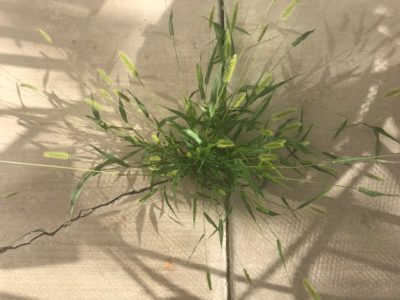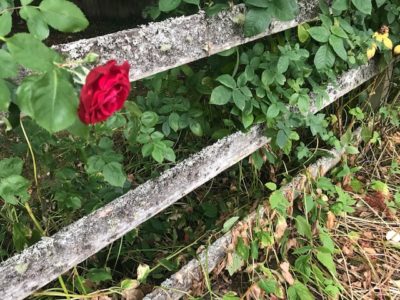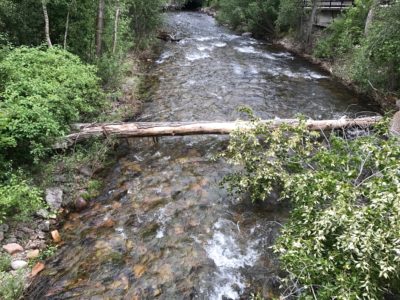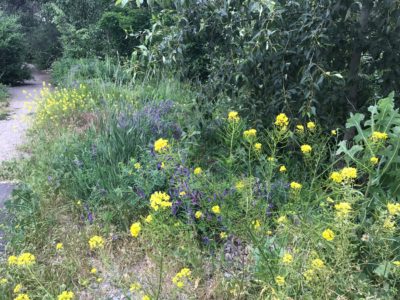
Yesterday morning I’m sitting in my back yard on a small cement patio at wire meshed bistro table. It’s 9:00. It’s sunny. Skies are blue. It’s 70 degrees, and on its way to the mid 90s. I’m being quite slow in pace, welcoming a quiet Sunday morning. I have coffee. I’m listening to and watching sparrows and robins fly in and out two larger trees, and hopping on the ground. I’ve just had a spontaneous, fun, and nourishing FaceTime call with a friend, who also was in a slow Sunday. Ah, there’s something great about this pace. It’s not that way every Sunday.
While talking with my friend, I’m noticing this clump of weed / grass growing through a crack in the sidewalk. I’ve been away for much of the month, so I’m just kind of refamiliarizing myself with my yard. Again, glad for this slowed pace.
First, this weed clump impresses me — what grows through cracks is rather impressive. I’ve put in a fair amount of effort to remove such weeds. So, I’m a bit disgruntled to see the weeds back. But, pause…, I’ve always been impressed by what grows in the cracks of sidewalks, roads, and rocky mountain slopes. This bit of weed is really in full splendor. I’m loving, for the moment, it’s perseverance.
Second, I’m drawn to the shadow. The sun has now more fully risen above neighboring buildings. It’s shining through the mesh bistro table and chairs. It’s shining through this weed and grass clump. It has a beauty to it. I’m not surprised. But I am wowed in the moment. I’m quite drawn in to the detail of projected shadow onto this little bit of cement patio.
Ah, now for the freedom to wander in the way that I so enjoy. On a Sunday. Well, on most days. Outer gives access to inner. Inner shapes what we see in outer. The moment of now gives access to the longer arc. The longer arc feeds what we see in the now.
I’m drawn to what I perceive in this clump of weed for its persistence. And for its beauty. In short, I seek such persistence and beauty in myself. I seek to meet others in their version of persistence and beauty, whatever that version is, and whatever the complex mixing is of different versions. We humans, we all seek to be seen in some way, and to see others with an eye of beauty. This is the work of humans together — I would suggest it is more of the “how” that so many of us seek in being together.
I’m drawn to the image of shadow for its intricate detail. It too is rather beautiful. Oh, for any of us to look upon shadow with a certain kind of awe for its beauty. That shadow in us. The shadow in others. The shadow in us as a group. I’ve done a fair amount of shadow avoiding in my time. And I continue to learn to normalize the encounter so as to engage it with more kindness and learning. Shadow in self and in others can be tended, can be received with a certain kind of beauty, and, it’s arising is as sure as the sun coming over neighboring buildings onto this cement patio.
I’m glad for some slow pace to see things quickly. On a Sunday. With coffee. Following FaceTime with a friend.







